Bullying Prevention: 5 Best Practices to Keep Kids Safe
All Posts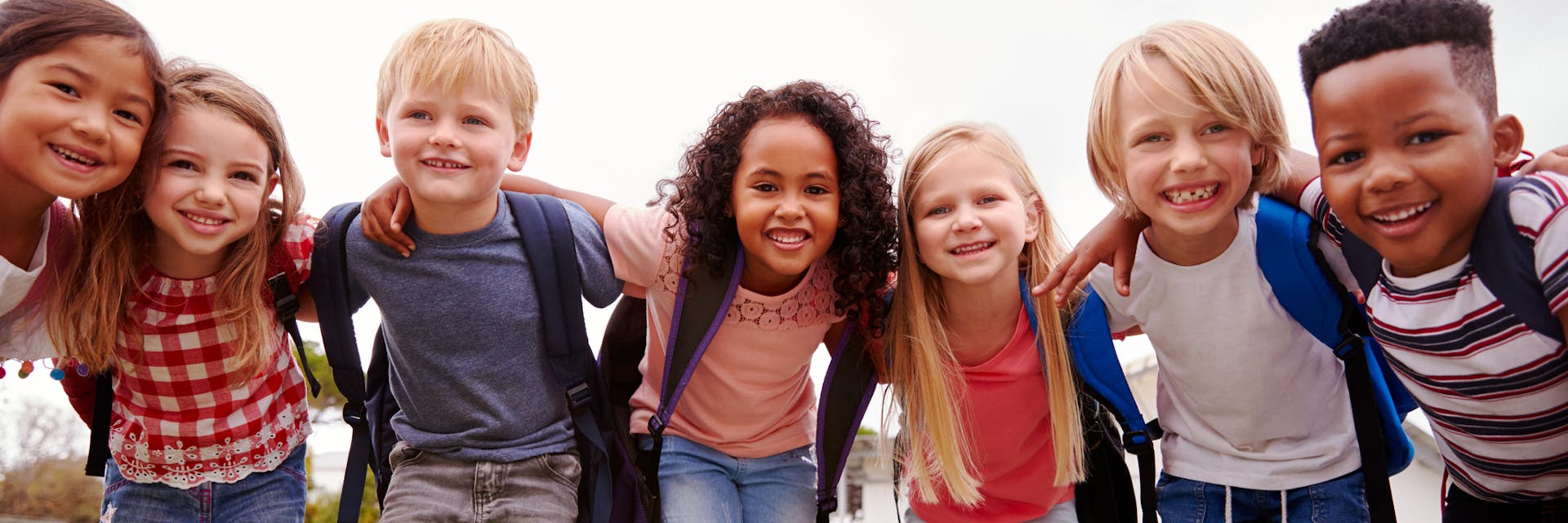
Written by Ryan Juraschka
Category
- School Leaders
- School Leadership
Contents
Bullying. It’s one of the few words that trigger alarm in students, parents, teachers, and school leaders alike.
School safety is the right of all your students — and it’s up to you to put a bullying prevention plan in place to ensure your students feel safe, comfortable, and confident. With the right plan, you, your staff, and your community will be ready to take on bullying when it arises in your school.
Creating an entire bullying prevention plan seems like a tall order, but with this guide, you’ll be ready to take on bullying wherever it appears.
What is bullying?
Bullying is unwanted aggressive behavior that usually happens among school-aged children. There are a wide range of bullying actions which include spreading rumors, attacking someone verbally, making threats, and attacking someone physically.
By definition, two things need to happen for aggressive behavior to be considered bullying:
- Power imbalance — The aggressor uses whatever advantages or power they have to harm or control others. This includes things like knowledge of private information, popularity, and physical strength.
- Repeated attacks — aggressive behaviors are repeated or leave the possibility for future attacks.
Bullying can be broken down into four categories:
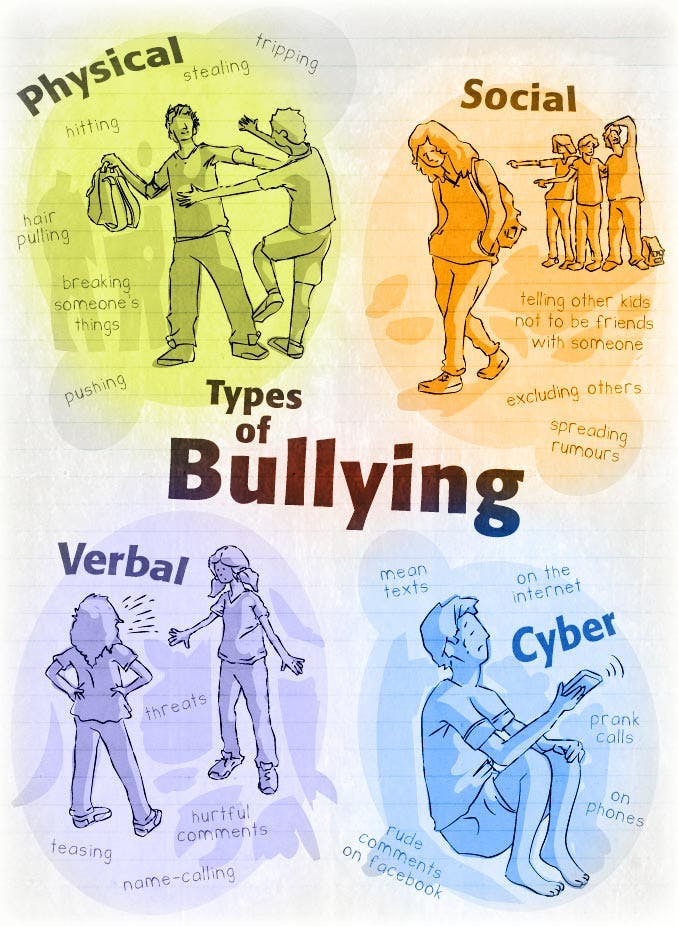
Credit: Edgalaxy
Physical bullying
Physical bullying is the act of using physical strength to exert power over others by causing bodily harm or damaging belongings. Out of the four types of bullying, physical bullying is typically the easiest to spot due to its visible actions and effects.
Physical bullying actions include:
- Spitting
- Tripping or shoving
- Hitting, punching, slapping, or kicking
- Stealing or breaking someone’s belongings
Verbal bullying
Verbal bullying is when individuals or groups use abusive language to hurt, insult, ridicule, or embarrass another person or group of people. Verbal bullying, or verbal abuse, can be just as powerful as physical actions and lead to depression, low self-esteem, and other psychological issues.
Verbal bullying actions include:
- Teasing
- Taunting
- Name-calling
- Threatening to harm
- Inappropriate comments
Social bullying
Social bullying is when one party tries to harm the reputation or relationships of another party. This is one of the hardest forms of bullying to recognize, as it’s often done behind the victim's back. Aggressors are hard to identify; as gossip and rumors spread, it becomes difficult to pinpoint the source of them.
Social bullying actions include:
- Spreading rumors or gossip
- Exposing private information
- Embarrassing someone in public
- Telling other people not to be friends with someone
Cyberbullying
Cyberbullying has become more prominent in the past generation, as digital devices have become accessible to everyone. It’s a division of social bullying, but it takes place over digital platforms such as smartphones, social media, tablets, and computers.
Cyberbullying is unique as the information presented is available 24/7 online and, in a lot of cases, it remains there permanently.
Cyberbullying actions include:
- Sending hurtful text messages
- Hacking into someone’s social media account
- Spreading rumors online with media such as Facebook
- Spreading private information such as sensitive photos online
Where and when does bullying happen?
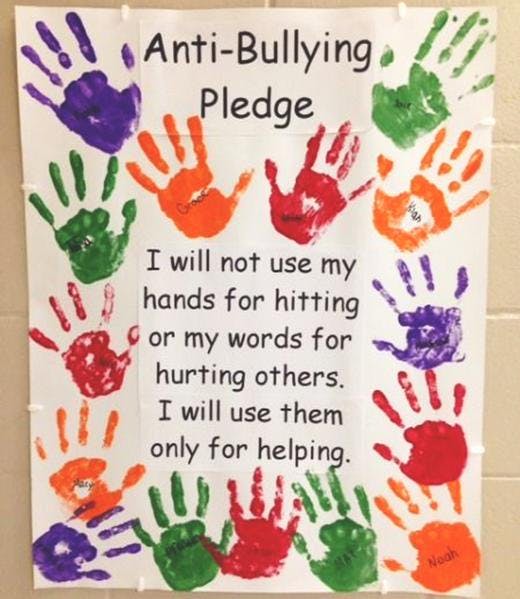
Credit: Bored Teachers
Bullying can happen anywhere and at any time, especially now that so many people have access to the internet. However, a lot of bullying stems from school relationships and interactions.
In fact, a study done by Bradshaw, Sawyer, and O’Brennan of John Hopkins Center for the Prevention of Youth Violence, showed that 29.3% of bullying happens in the classroom.
Bullying doesn’t just happen at school, either. It can happen on the bus, traveling to and from school, and online.
Bullies like to strike when there are no authoritative figures around or when there’s enough chaos that their acts of aggression won’t be noticed.
The adverse effects of bullying
Bullying can cause serious physical and mental harm to victims in the moment and throughout their lives. This is why it’s so important to put an emphasis on anti-bullying to protect the students in your schools.
A 2017 study by the Center for Disease Control states:
“Bullying can result in physical injury, social and emotional distress, self-harm, and even death. It also increases the risk for depression, anxiety, sleep difficulties, lower academic achievement, and dropping out of school.”
The study goes on to say that students who get bullied are more likely to develop mental health and behavioral problems.
If bullying isn’t addressed in a timely manner, the effects can continue to build and lead to more severe problems. Bullying doesn’t just affect physical and mental health — it can seriously impact grades and relationships as well.
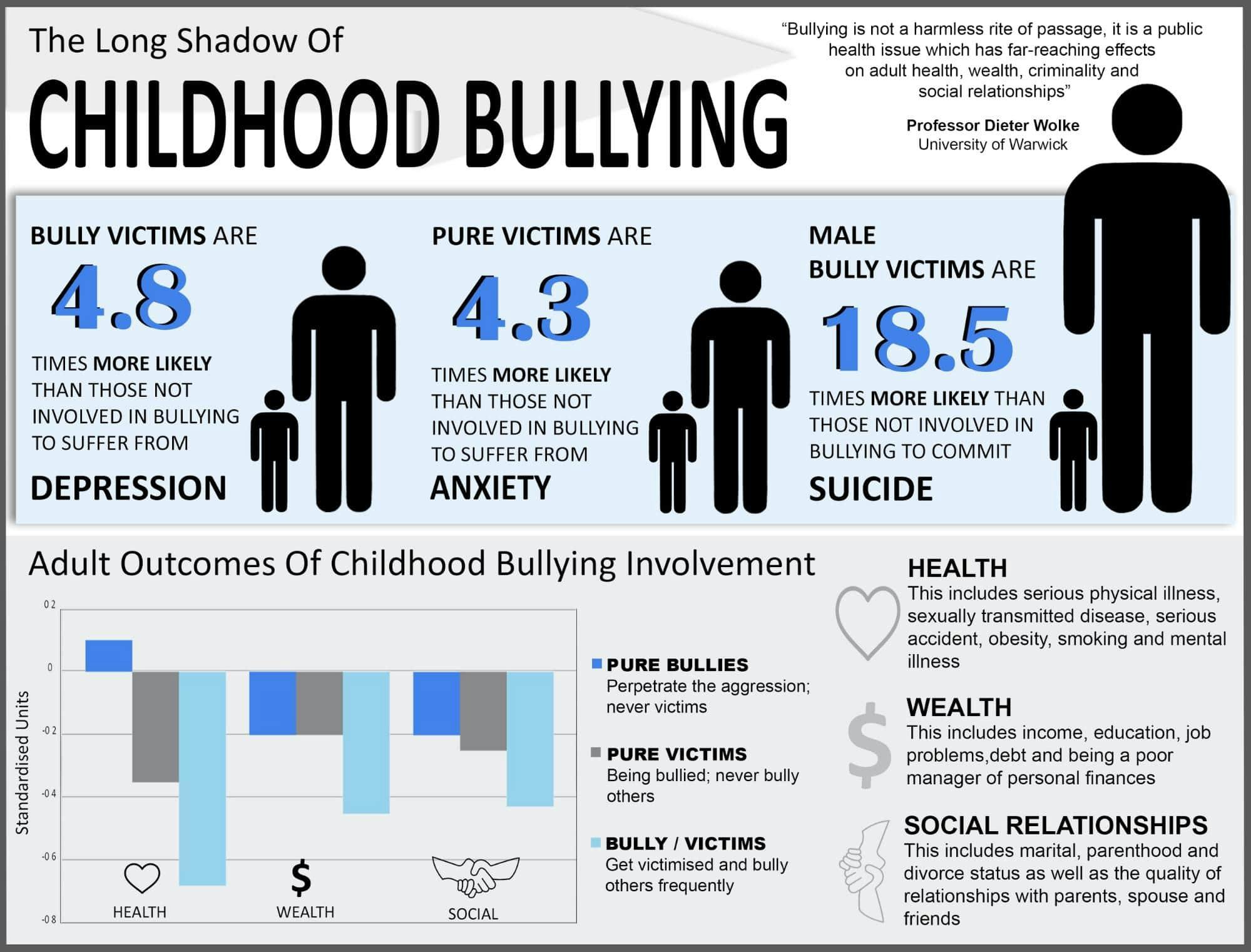
Credit: Medical X Press
Every student has the right to a safe learning environment and shouldn’t be bullied into feeling alone, scared, or anxious.
Bullying prevention programs
The Olweus bullying prevention program is one of the most adopted plans around the globe. Created by Dr. Dan Olweus, the program was an answer to a tragedy that struck Norway in 1983.
Three young boys had died via suicide, as a result of severe bullying. In response to this, the Ministry of Education began a national campaign against bullying in schools, which led to the first version of the Olweus bullying prevention program.
The Olweus bullying prevention program, or OBPP, is a whole school approach to reducing bullying and improving school climate. It’s implemented at three levels:
- Level 1 — School-wide
- Level 2 — Classroom
- Level 3 — Individual
The whole school approach means teachers, staff, and students alike are taught strategies to spot bullying and stop it when it happens.
Since its creation, the OBPP has shown mixed results, with some studies showing great declines in bullying and others showing little change at all.
For example, Halley Elementary School implemented the OBPP in 2006. At the time of implementation, 42.3% of students reported being bullied, but one year later, “33.9[%] of students reported being bullied,” dropping the bullying number by nearly 10% in only one year.
On the other hand, an article titled The Effectiveness of the Olweus Bullying Prevention Program in Public Middle Schools by the University of Washington found that “The program had some mixed positive effects varying by gender, ethnicity/race, and grade, but no overall effect.”
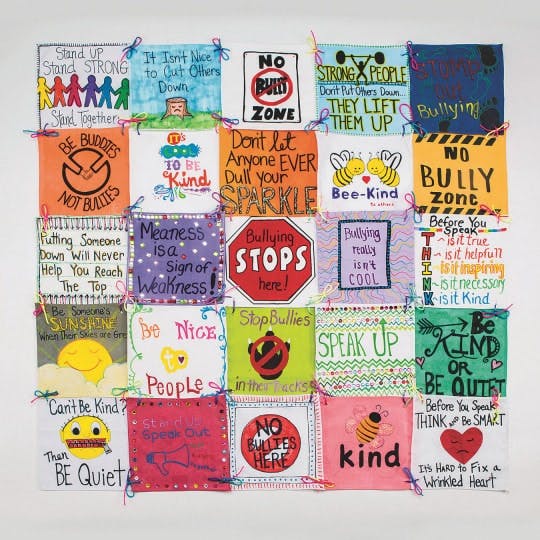
Credit: S&S Blog
Despite the mixed results, the OBPP does a lot to bring anti-bullying efforts to the forefront and the concepts of this program can be used to create your own bullying prevention plan.
Here are some things you’ll want to do to create an effective bullying prevention program:
Get community buy-in
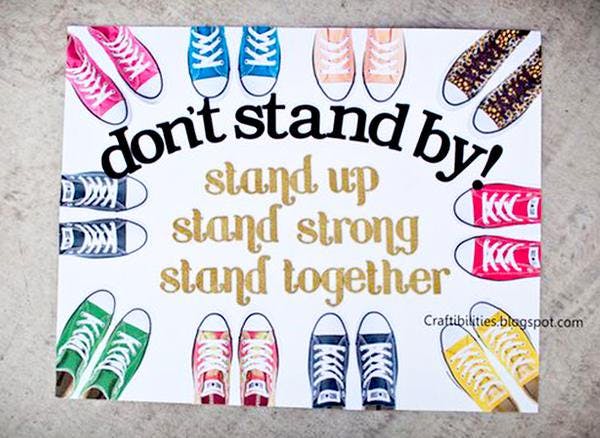
Credit: Bored Teachers
For bullying prevention to work, you need to go beyond just your teachers, staff, and students — parents and community members need to be part of the plan too!
Kids look up to adults, and if every adult in a community is working together to eliminate bullying, the chances of success are much higher. Make sure all parents are on the same page with your bullying prevention plans and get community members like police, firemen, and local celebrities to join your cause as well.
Having the entire community working together can help promote activities that build positive relationships between students and eliminate bullying behavior.
Educate everyone on bullying
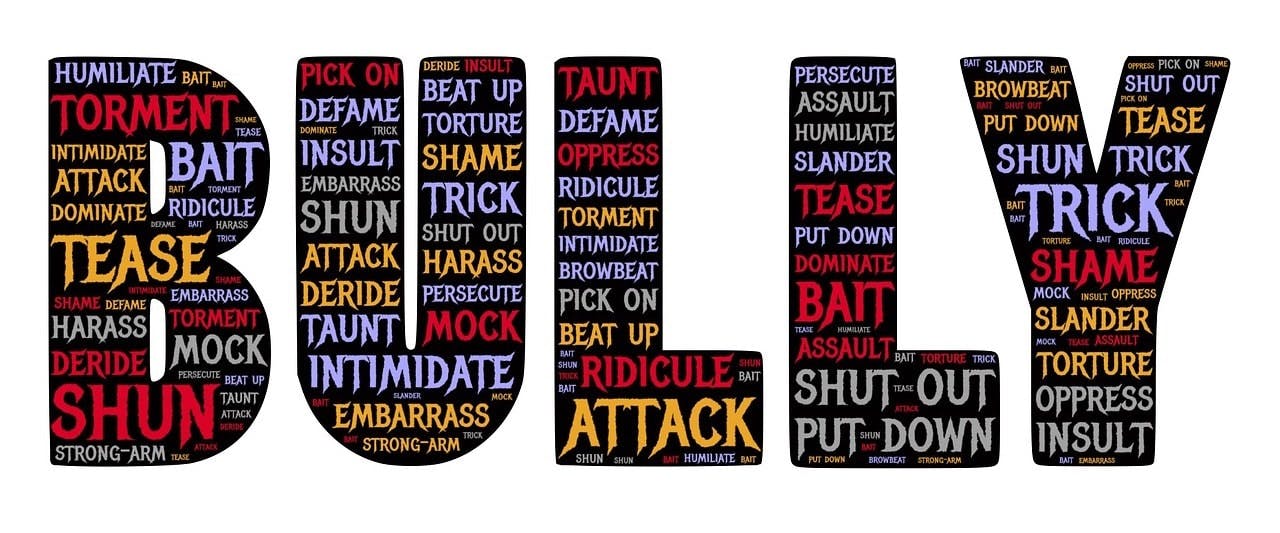
Credit: D.A.R.E.
For your overall bullying prevention strategy to work, students, teachers, staff, parents, and community members must be educated on it. The more your community understands about bullying — what it looks like, how it affects others, and how to treat others — the more likely they are to support your bullying prevention plan.
As you educate different members of the community, take the time to get their feedback on other actions to take, or on what you might be missing.
When educating students, try to get community members, such as the local police department, to help spread the message that bullying is unacceptable.
Create a positive environment
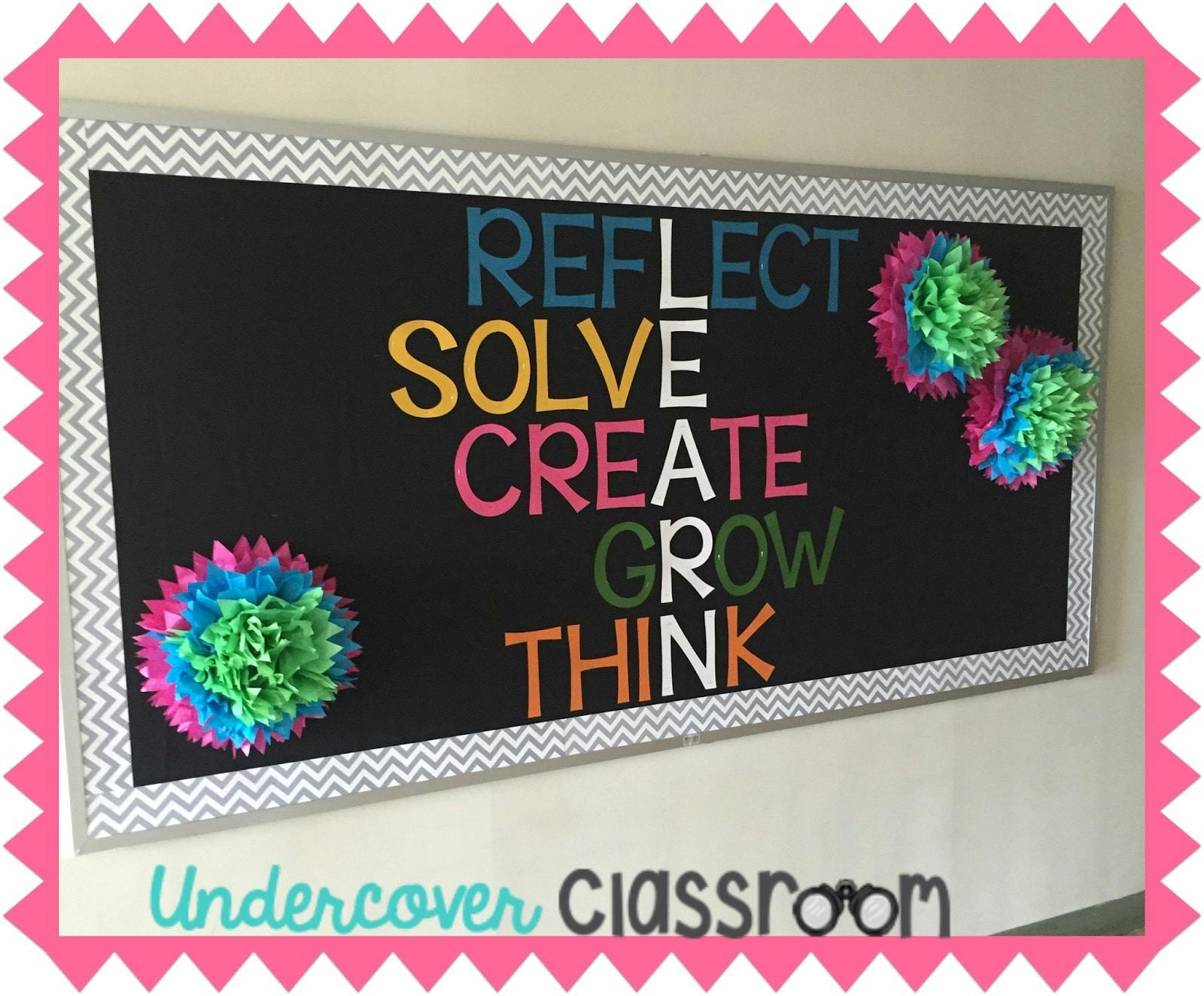
Credit: Undercover Classroom
Positive relationships deter aggressive behavior and help prevent bullying. This is why it’s important to promote positive behavior wherever possible.
Some ways you can do this are:
1. Model how to treat and interact with others
Students learn from watching adults. A lot of us react the same way our parents would when handling stress and conflict. Make sure that when adults in your community are interacting with each other, they’re treating everyone with kindness and respect.
Acting this way shows students there’s no place for bullying.
In the classroom, create sets of rules for children to follow that promote positive interactions and helping one another, while discouraging bullying behavior.
2. Communicate
Different members of the community have different things they can talk to students about to ensure they’re doing okay and understand the concept of bullying.
Parents can ask things like:
- What was the best thing that happened today? Did anything bad happen today?
- Do you like riding the school bus? Who do you sit with?
- What is lunch like at school? Who do you sit with? What do you talk about?
Teachers or community members can ask things like:
- What does the word “bullying” mean to you?
- What does a bully look like? Act like? Say?
- What are you good at? What do you like to do?
Keep the lines of communication open. Students have a lot of insights into what’s happening in class, and asking the right questions can help you help them. Talking to members of the community — such as bus drivers or coaches — can also help you gather information.
3. Encourage kids to do what they love
One of the best ways for students to create positive and lasting relationships is to group them with other kids who have like interests. Find out what students like doing and help them find a place to express themselves.
Activities include:
- Volunteering
- Joining a school club
- Joining a youth group
- Playing sports/games
- Playing instruments/singing in a choir
Giving students the opportunity to do what they love can build confidence and create friendships that can protect them from bullying.
Have events planned for the whole year
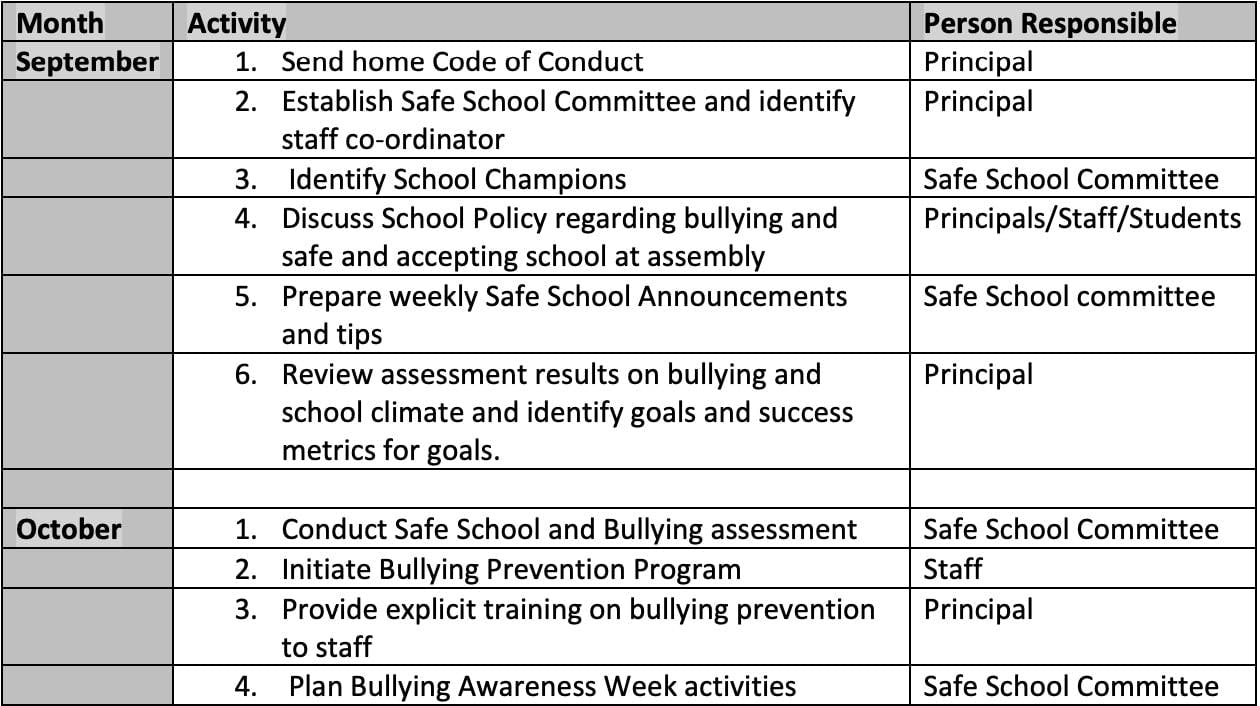
Credit: PREVNet
Organize/Create/Form a committee made up of different community members to represent everyone’s best interests. This safety committee will help you put an actionable plan in place to prevent bullying in your school and community.
You’ll want to have different events and activities all year to make sure bullying prevention is always on people’s minds.
Some ideas you might include are:
- School newsletter — Outline what is happening at your school, upcoming events, and ways parents can get in touch with teachers and staff.
- School safety tips — This can be done weekly (or daily, if you’re feeling extra ambitious). Outline different ways students can stay safe and prevent bullying.
- Teacher training — Specify days where staff learn about bullying and how to prevent it or intervene when it happens.
- Student activities — Students at different grade levels can participate in activities that promote positive relationships and discourage bullying. This could include creating posters, school clubs, or mentoring programs.
- Anti-bullying assemblies — Gather the school to talk about bullying prevention. This is a perfect time to get different community members involved.
- Parent/Guardian nights — Invite parents and guardians to the school and talk to them about what’s happening, upcoming events, and any questions or concerns they might have.
Plan events for the whole year to ensure bullying prevention isn’t forgotten at your school.
Do an environmental scan

To prevent bullying at your school, you need to understand when and where it’s happening. You also need to determine whether your plan is having any effect to stop bullying. An environmental scan gives you the perspective you need through questionnaires, observations, and interviews.
Add a map of the school to questionnaires so students can pinpoint when and where bullying occurs. Give surveys to teachers, staff, and parents to get their insights as well.
Classroom check-ins should happen regularly, to see if any students have seen or participated in bullying or if they’ve been bullied themselves.
If there are no changes in the amount of bullying that happens at your school year-over-year you’ll know you need to update your bullying prevention strategy.
Bullying intervention strategies
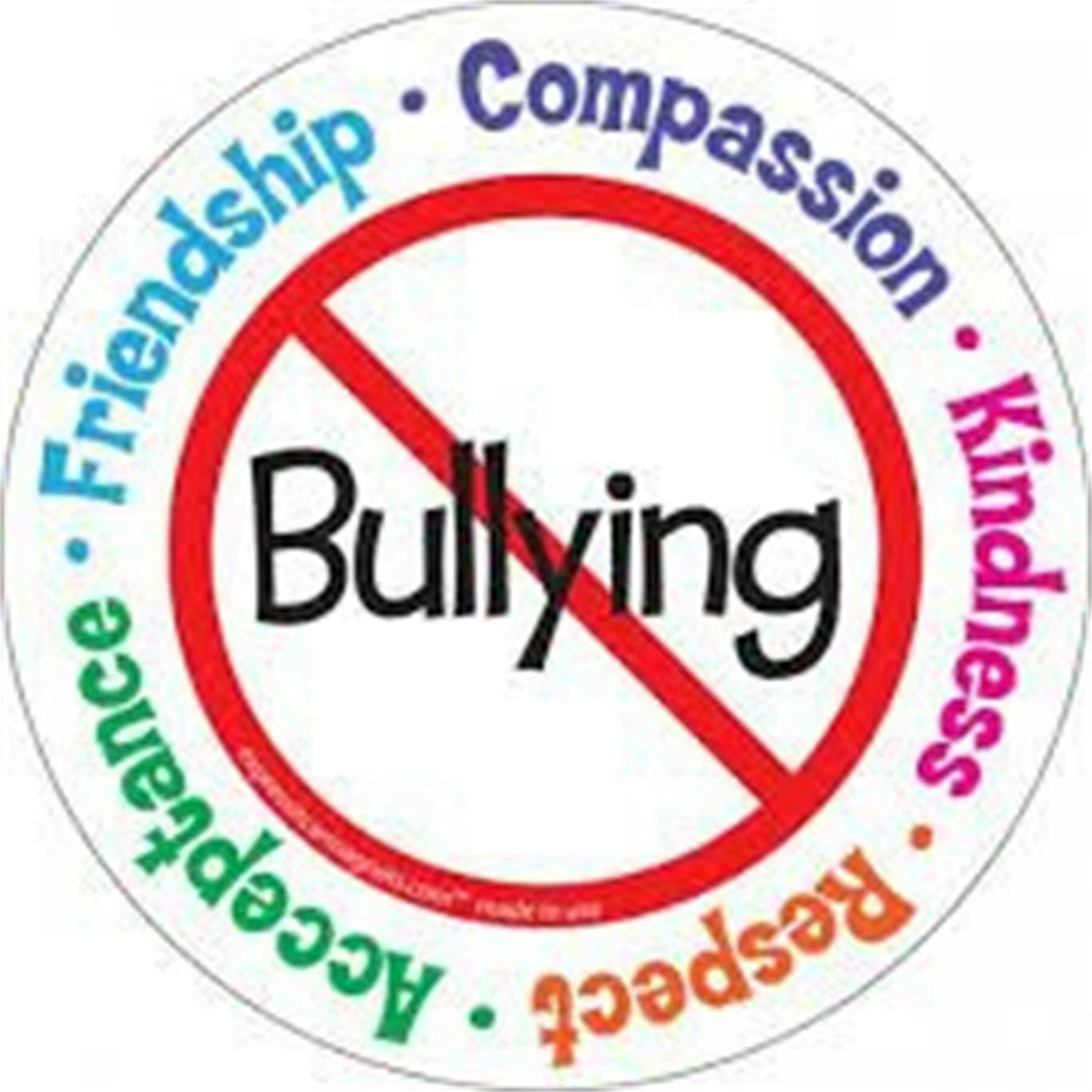
Credit: St. Luke Catholic Elementary School
Here’s the hard truth about bullying prevention: no strategy completely eradicates bullying. When bullying does occur at your school, you and your staff must be prepared to handle it and intervene.
Punishment via suspension or expulsion is a typical response to bullying. However, a study titled Preventing Bullying through Positive Behavioral Interventions and Supports (PBIS): A Multitiered Approach to Prevention and Integration by Catherine Bradshaw states:
“[T]here is limited evidence that they are effective in curbing aggressive or bullying behavior, as many children who bully may themselves, be victims and may have other behavioral, social, or emotional problems requiring intervention.”
When children are simply removed from school after bullying another student, they don’t learn the consequences of their actions or how they’re affecting the victims of their actions.
There are three recommended bullying intervention strategies to resolve bullying problems and stop them from occurring again.
1. Restorative justice
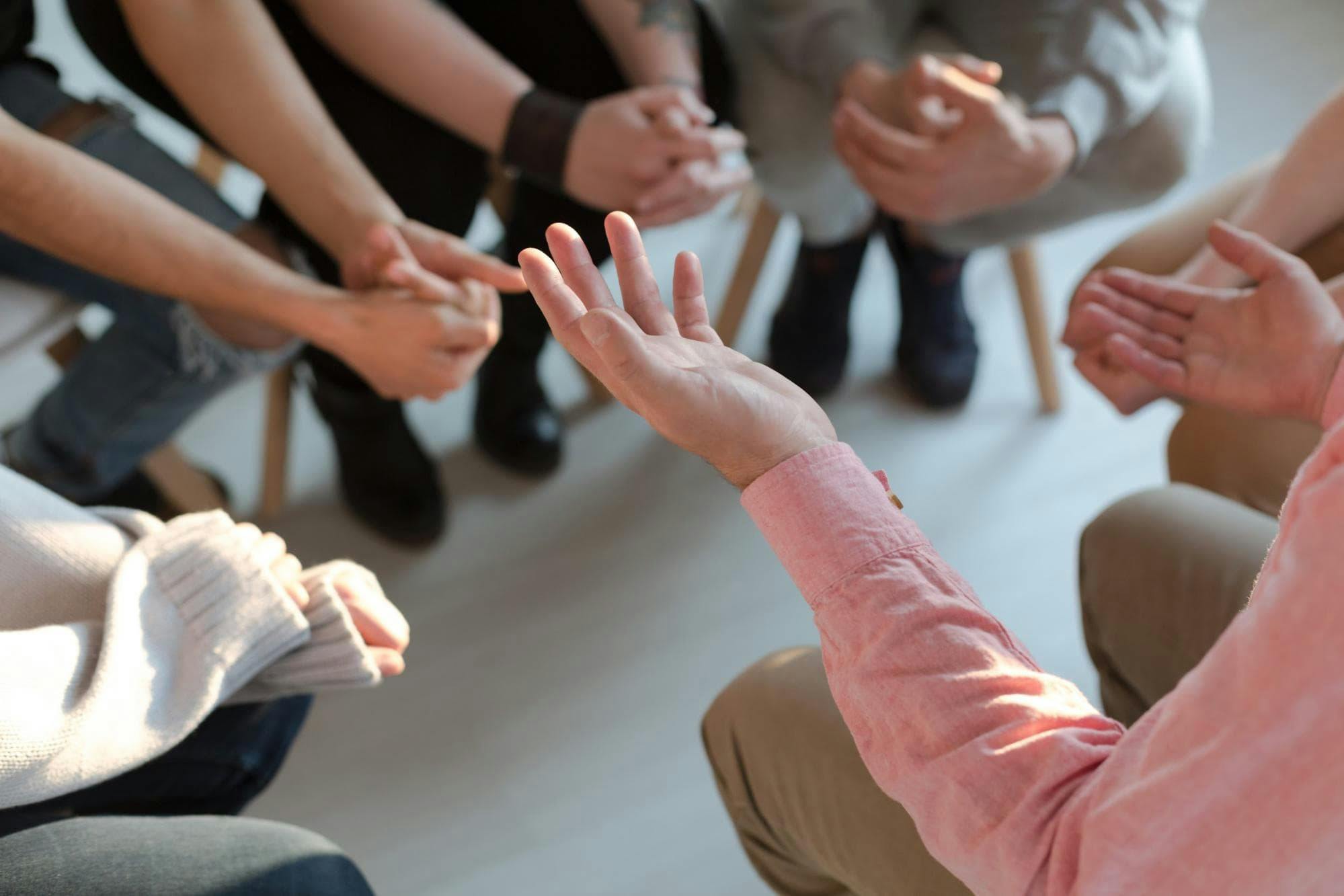
Restorative justice focuses on mending broken relationships, rather than exacting revenge.
This strategy provides a means for a bully to realize what they’ve done wrong, the effect it had, and their ability to make things right.
After an offense has been made, a mediation is put together between the bully, the victim, a facilitator, and other relevant parties (such as parents). The purpose of the meeting is to help the bully realize their actions towards the victim are unacceptable and encourage them to make amends. Amends need to be made before the bully can be accepted back into the community.
For this to be an effective strategy, the facilitator needs to be skilled in navigating through the problem and guiding the bully to a solution. If done incorrectly, restorative justice can make the bully feel resentful and deliver a “fake” apology — resulting in an unsuccessful intervention.
2. The support group approach

The support group approach uses the aid of the school community (mainly other students) to establish a positive relationship between conflicting individuals.
This strategy starts with a direct account of what happened from the victim. You (or a teacher) put together a group that includes the identified bullies along with a number of other peers. The mediator tells an account of what happened and then resolutions are discussed.
Whoever is in charge of the meeting can leave the room once they’re satisfied with the solutions being presented and they’re confident the victim will be helped following the meeting. They’ll then monitor the situation carefully to ensure bullying doesn’t continue.
The other students in the meeting should feel compassion towards the victim and want to help them find a resolution. When you or the teacher leave the meeting to the students, students develop a sense of ownership and resolution plans are more likely to succeed.
3. The method of shared concern
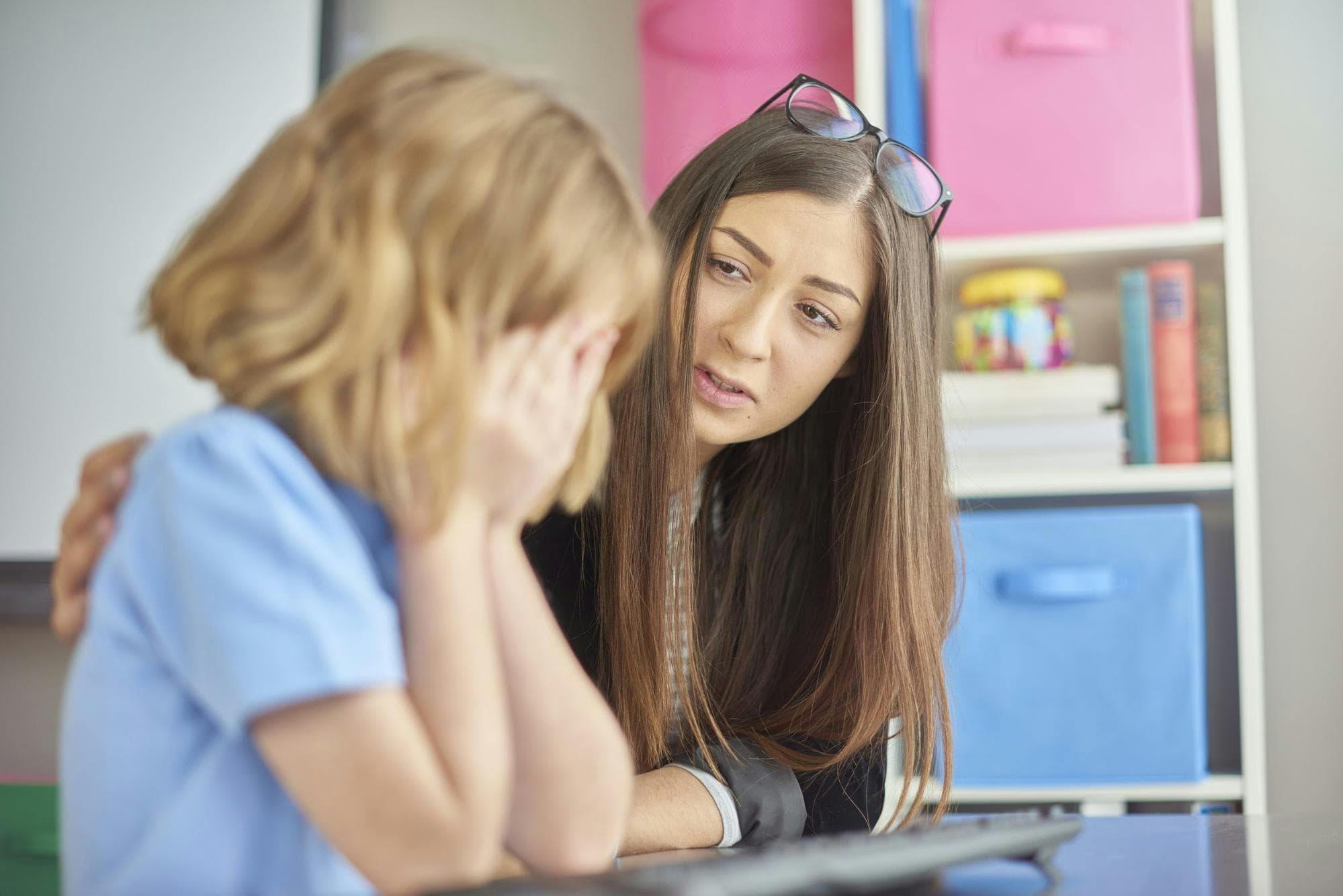
Much like the other two strategies, the method of shared concern doesn’t aim to accuse and punish bullies. This strategy aims to create a positive relationship between the bully and the victim. The most important outcome is a situation where the victim feels safe.
This method is different because it develops a resolution among both parties: the victim and the bully. Resolution happens through a series of planned meetings with each individual and also in groups.
The first step is to gather information about the bullying incident, then interview the bullies individually without accusing them of anything. Bullying is typically a group phenomenon, so separating those exhibiting bullying behavior separately can help with acknowledgment and progress towards a resolution. This works especially well if the bullies begin to show concern for the victim.
When the interviews are complete, organize a group meeting with the bullies and the victim, and work to resolve the issue together.
Our experience with bullying

Before joining the Prodigy team as a Partnerships Education Specialist, Dr. Josh Prieur worked as an Assistant Principal. As an educator, he found the most effective method for bullying intervention to be mediation.
When bullying occurred, the bully and victim were put in a meeting, each with their own representative (usually an assistant principal) to ensure they had a voice during the discussion. A third neutral party, such as a guidance counselor, ran the meeting and guided the parties to a resolution.
Dr. Prieur would start meetings with a piece of wisdom he learned from one of his professors, Dr. Paul Vermette, of Niagara University College of Education:
“You don’t have to like one another, but you must respect one another.”
The mediation came with a set of ground rules to ensure a safe environment. Both the bully and the victim were required to:
- Be willing to work through the conflict
- Tell the truth
- Listen without interrupting
- Show respect
- Carry out their agreement
Once the bully and victim came to an agreement, the meeting was documented and the parents were contacted.
To ensure the safety of both students, a School-Based Team (SBT) referral was put in place. This team followed up with both parties to ensure the agreement was being carried out and no further bullying was happening, and to see if there were any other ways they could help the children.
Conclusion: bullying prevention programs
School safety is of the utmost importance for you and your teachers. Students have the right to a safe learning environment and it’s your duty to provide that to them.
A bullying prevention program can help reduce the amount of bullying that occurs at your school.
But that’s only the first step.
Bullying prevention takes a lot of monitoring and education to become successful. Yourself, teachers, staff, community members, and students need to know what bullying is and what to do when it occurs.
Don’t just create a bullying prevention plan and assume it’s working. Survey your school to make sure you’re getting acceptable results. If not, do more research, update your program, and continue working to create a bullying-free school environment.
Looking for an adaptive math resource? Try Prodigy Math Game, a curriculum-aligned platform for grades 1 to 8. Teachers can use Prodigy to:
- Align in-game adventures with classroom lessons
- Collect insights into student progress and learning gaps
- Send differentiated content and Assessments in just a few clicks



